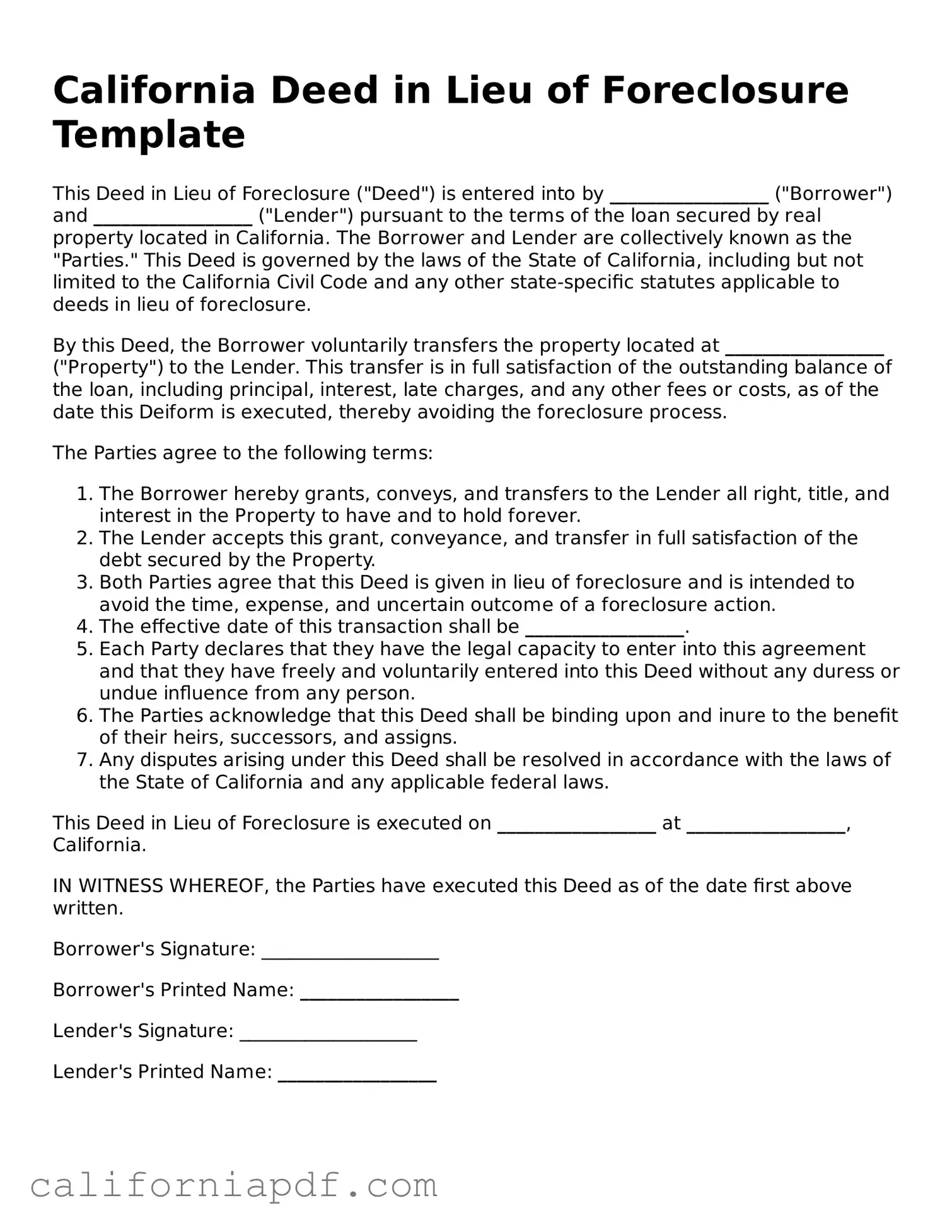California Deed in Lieu of Foreclosure Template
This Deed in Lieu of Foreclosure ("Deed") is entered into by _________________ ("Borrower") and _________________ ("Lender") pursuant to the terms of the loan secured by real property located in California. The Borrower and Lender are collectively known as the "Parties." This Deed is governed by the laws of the State of California, including but not limited to the California Civil Code and any other state-specific statutes applicable to deeds in lieu of foreclosure.
By this Deed, the Borrower voluntarily transfers the property located at _________________ ("Property") to the Lender. This transfer is in full satisfaction of the outstanding balance of the loan, including principal, interest, late charges, and any other fees or costs, as of the date this Deiform is executed, thereby avoiding the foreclosure process.
The Parties agree to the following terms:
- The Borrower hereby grants, conveys, and transfers to the Lender all right, title, and interest in the Property to have and to hold forever.
- The Lender accepts this grant, conveyance, and transfer in full satisfaction of the debt secured by the Property.
- Both Parties agree that this Deed is given in lieu of foreclosure and is intended to avoid the time, expense, and uncertain outcome of a foreclosure action.
- The effective date of this transaction shall be _________________.
- Each Party declares that they have the legal capacity to enter into this agreement and that they have freely and voluntarily entered into this Deed without any duress or undue influence from any person.
- The Parties acknowledge that this Deed shall be binding upon and inure to the benefit of their heirs, successors, and assigns.
- Any disputes arising under this Deed shall be resolved in accordance with the laws of the State of California and any applicable federal laws.
This Deed in Lieu of Foreclosure is executed on _________________ at _________________, California.
IN WITNESS WHEREOF, the Parties have executed this Deed as of the date first above written.
Borrower's Signature: ___________________
Borrower's Printed Name: _________________
Lender's Signature: ___________________
Lender's Printed Name: _________________
